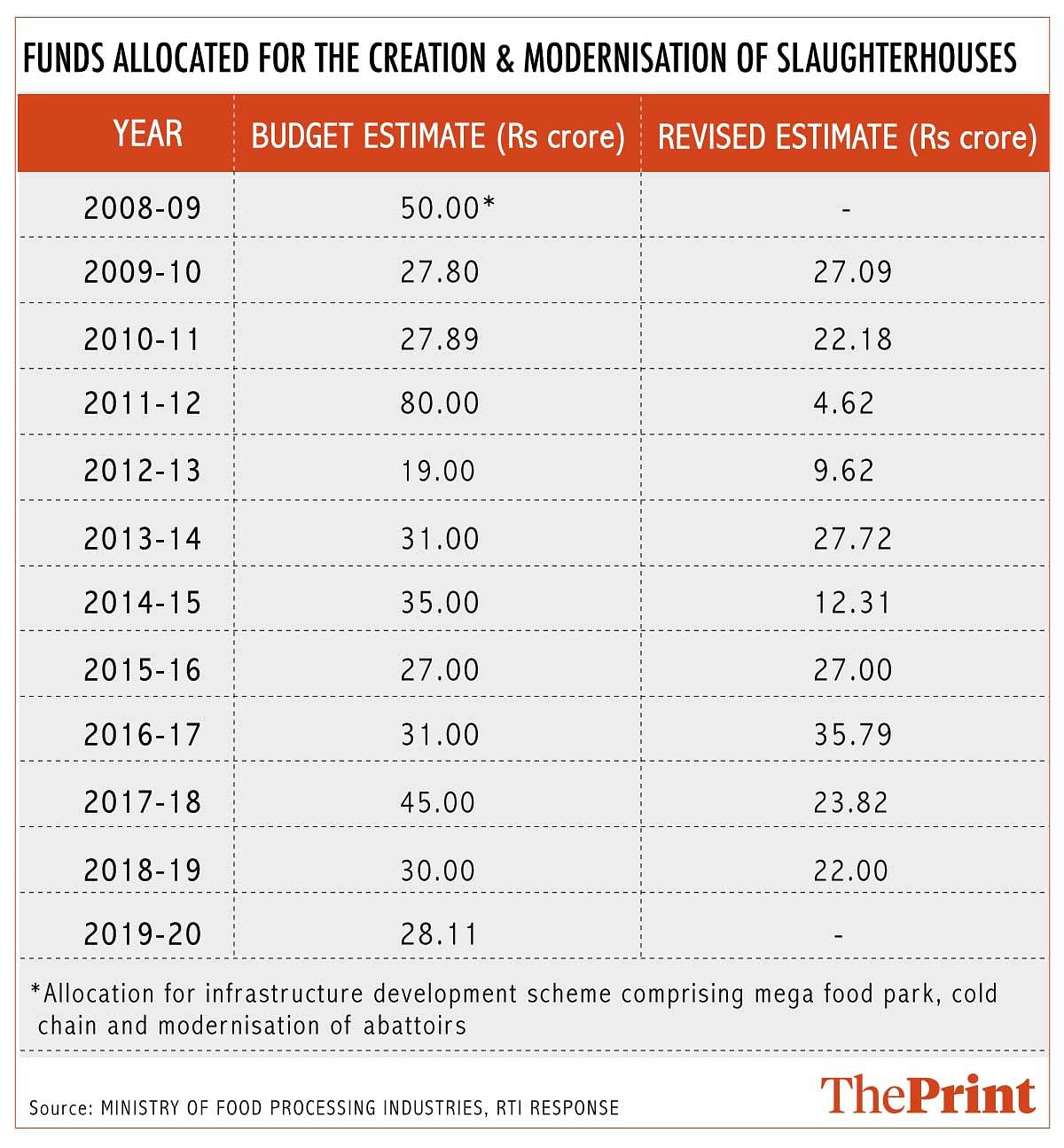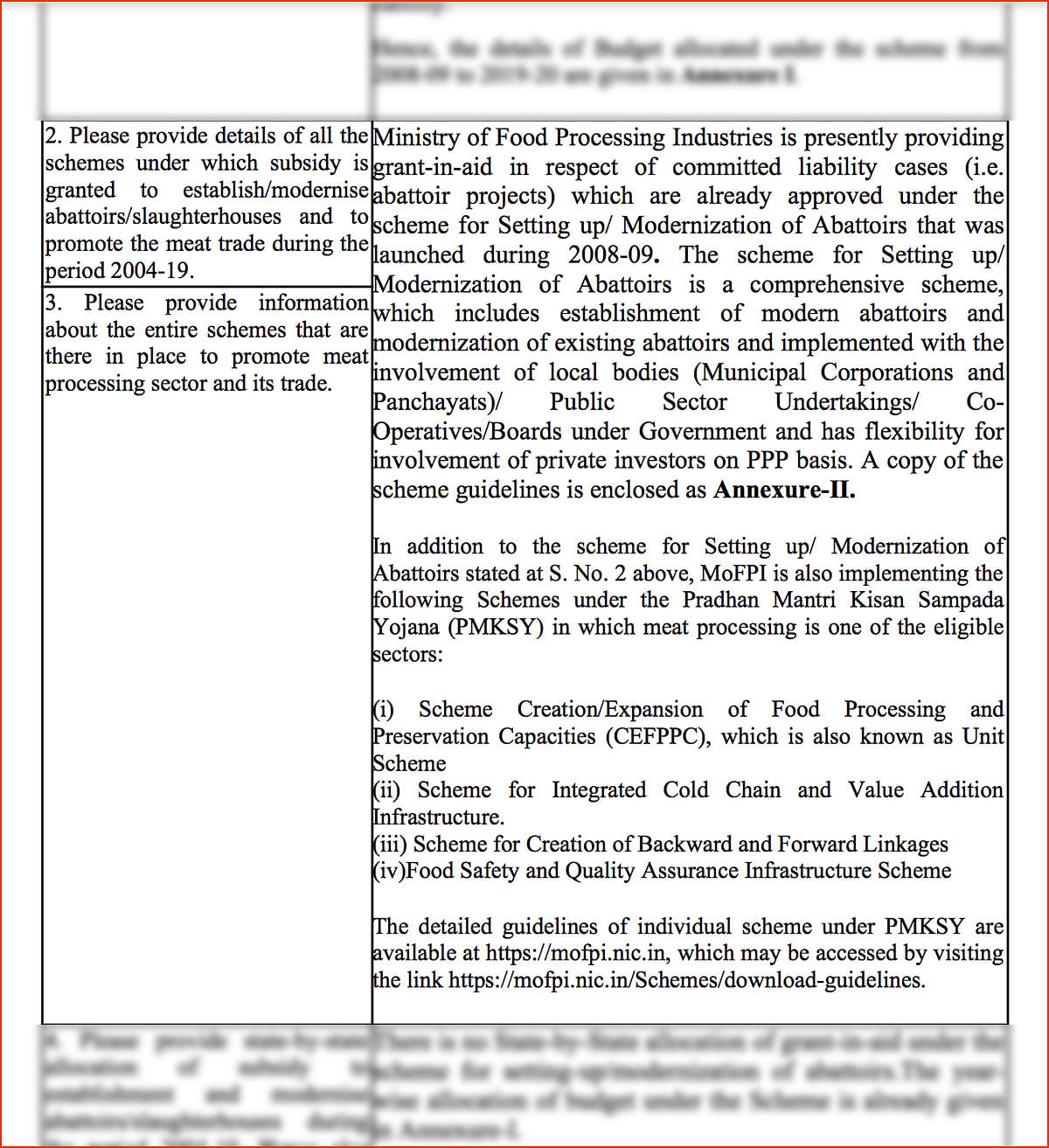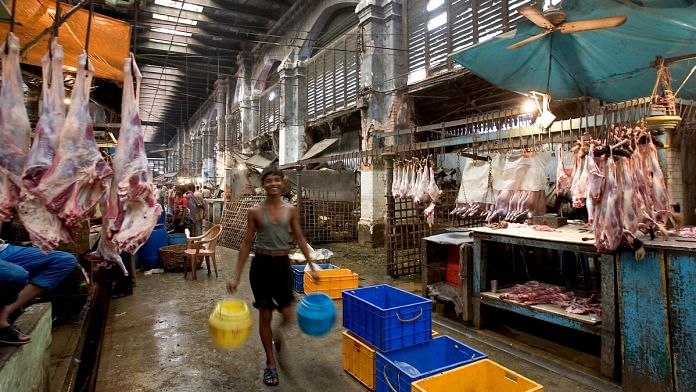New Delhi: Before coming to power in 2014, Narendra Modi had strongly criticised Manmohan Singh’s UPA government for subsidising slaughterhouses. But according to an RTI response by the Union Ministry of Food Processing Industries, under Modi’s first term, the subsidy actually increased by 33 per cent.
During his campaign trail ahead of the 2014 Lok Sabha polls, Modi had said: “This country wants a Green Revolution. But now those at the Centre want a ‘Pink Revolution’. Do you know what it means? When animals are slaughtered, the colour of their flesh is pink.
“Animals are being slaughtered and being taken to Bangladesh. The government in Delhi is giving subsidies to those who are carrying out this slaughter.”
However, the total subsidy allocated for establishing and modernising abattoirs and slaughterhouses under Modi’s first NDA government (2014-19) was Rs 120.925 crore, compared to Rs 91.23 crore under UPA-2 (2009-14).

The RTI response further states that the scheme to establish and modernise abattoirs and slaughterhouses was subsumed in a centrally sponsored scheme, National Mission for Food Processing, in 2014. Even after the introduction of the Pradhan Mantri Kisan Sampada Yojana (PMKSY) in 2016, the ministry continues to release funds towards projects that have already been approved as part of “committed liability”.
Also read: Cattle numbers down by 6% since 2012, sharpest fall in states with tough cow slaughter laws
New scheme, old purpose
The RTI response states that in addition to the now-discontinued scheme to establish and modernise abattoirs and slaughterhouses, the ministry is also implementing following schemes under PMKSY, in which meat processing is one of the eligible sectors:
- Creation/expansion of food processing and preservation capacities, also known as ‘Unit Scheme’.
- Integrated cold chain and value addition infrastructure.
- Creation of backward and forward linkages.
- Food safety and quality assurance infrastructure scheme.

The Unit Scheme is aimed at “creation of processing and preservation capacities and modernisation/expansion of existing food processing units with a view to increasing the level of processing, value addition leading to reduction of wastage… The setting up of new units and modernisation/expansion of existing units are covered under the scheme”.
So, while the older scheme has been discontinued, the new scheme is doing the same job.
Rhetoric vs policies
Despite the BJP’s rhetoric on slaughterhouses and cow protection, the Modi government’s policies have been committed to promoting the meat trade.
As ThePrint reported earlier citing official data, beef exports have been stable and in line with pre-2014 levels, and have witnessed some growth as well, despite claims of decline credited to cattle vigilantism post-2014.
In 2017, a top commerce ministry official told The Indian Express that “making China agree for direct import of bovine meat from India has been a top priority for Indian government since Narendra Modi government took over in May 2014”. The government’s proactive efforts eventually made China agree to inspect and approve 14 Indian abattoirs for direct imports.
‘Don’t see numbers in isolation’
An official of the food processing ministry, however, told ThePrint that the allocation for upgrade of slaughterhouses under the Infrastructure Development Scheme (IDS), comprising mega food park, cold chain and modernisation of abattoirs should not be seen in isolation, but in comparison to the overall budget allocated for the ministry.
“The overall allocation for the food processing ministry has also increased manifold since 2014,” said the official, who did not want to be named.
The overall allocation for the food ministry in 2017-18 was Rs 684.07 crore, which increased to Rs 1,000 crore in 2018-19 and Rs 1,196.60 crore in 2019-20, the official pointed out.
Also, most of the schemes for which money was allocated are ongoing ones or those which have been discontinued or subsumed under other schemes.
“They are not new schemes for which fresh allocation was made,” the official added.
(With inputs from ThePrint Team)
Also read: Muslims In India have sought ban on cow slaughter for decades. But politics didn’t allow it
The writer is a student of journalism at the Indian Institute of Mass Communication, New Delhi.




BJP does double standards with meat trade. They r the biggest givers of money to BJP.